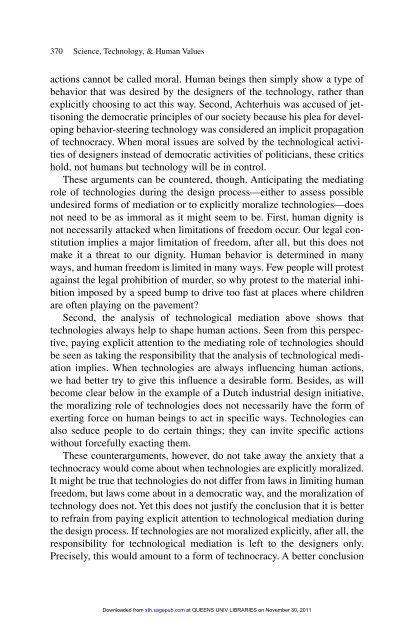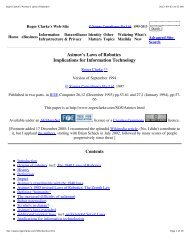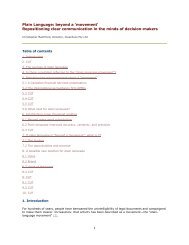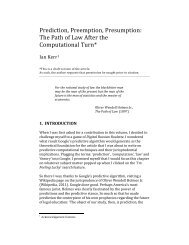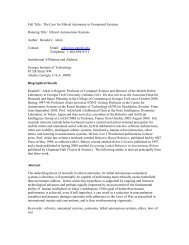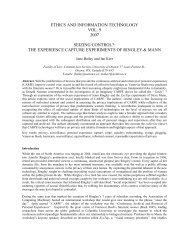Materializing Morality: Design Ethics and Technological Mediation.
Materializing Morality: Design Ethics and Technological Mediation.
Materializing Morality: Design Ethics and Technological Mediation.
Create successful ePaper yourself
Turn your PDF publications into a flip-book with our unique Google optimized e-Paper software.
370 Science, Technology, & Human Values<br />
actions cannot be called moral. Human beings then simply show a type of<br />
behavior that was desired by the designers of the technology, rather than<br />
explicitly choosing to act this way. Second, Achterhuis was accused of jettisoning<br />
the democratic principles of our society because his plea for developing<br />
behavior-steering technology was considered an implicit propagation<br />
of technocracy. When moral issues are solved by the technological activities<br />
of designers instead of democratic activities of politicians, these critics<br />
hold, not humans but technology will be in control.<br />
These arguments can be countered, though. Anticipating the mediating<br />
role of technologies during the design process—either to assess possible<br />
undesired forms of mediation or to explicitly moralize technologies—does<br />
not need to be as immoral as it might seem to be. First, human dignity is<br />
not necessarily attacked when limitations of freedom occur. Our legal constitution<br />
implies a major limitation of freedom, after all, but this does not<br />
make it a threat to our dignity. Human behavior is determined in many<br />
ways, <strong>and</strong> human freedom is limited in many ways. Few people will protest<br />
against the legal prohibition of murder, so why protest to the material inhibition<br />
imposed by a speed bump to drive too fast at places where children<br />
are often playing on the pavement?<br />
Second, the analysis of technological mediation above shows that<br />
technologies always help to shape human actions. Seen from this perspective,<br />
paying explicit attention to the mediating role of technologies should<br />
be seen as taking the responsibility that the analysis of technological mediation<br />
implies. When technologies are always influencing human actions,<br />
we had better try to give this influence a desirable form. Besides, as will<br />
become clear below in the example of a Dutch industrial design initiative,<br />
the moralizing role of technologies does not necessarily have the form of<br />
exerting force on human beings to act in specific ways. Technologies can<br />
also seduce people to do certain things; they can invite specific actions<br />
without forcefully exacting them.<br />
These counterarguments, however, do not take away the anxiety that a<br />
technocracy would come about when technologies are explicitly moralized.<br />
It might be true that technologies do not differ from laws in limiting human<br />
freedom, but laws come about in a democratic way, <strong>and</strong> the moralization of<br />
technology does not. Yet this does not justify the conclusion that it is better<br />
to refrain from paying explicit attention to technological mediation during<br />
the design process. If technologies are not moralized explicitly, after all, the<br />
responsibility for technological mediation is left to the designers only.<br />
Precisely, this would amount to a form of technocracy. A better conclusion<br />
Downloaded from sth.sagepub.com at QUEENS UNIV LIBRARIES on November 30, 2011


